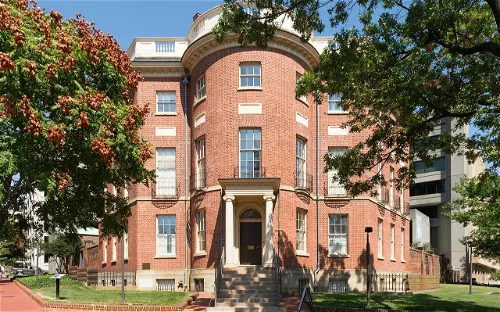Octagon House and its collection
The Octagon House, a significant architectural landmark in Washington D.C., was constructed between the years 1789 and 1800. The design of this unique building was the work of Dr. William Thornton, who is also known for his design of the United States Capitol. This connection to a renowned architect and a prominent national monument adds to the historical significance of the Octagon House.
The Octagon House and the War of 1812
In 1814, the Octagon House served as a temporary residence for President James Madison after the White House was burned down by the British. The circular room above the entrance was used by Madison as a study, and it was in this room that he signed the Treaty of Ghent, which marked the end of the War of 1812. This historical event adds a layer of national significance to the Octagon House.
History & Anthropology Historic house








